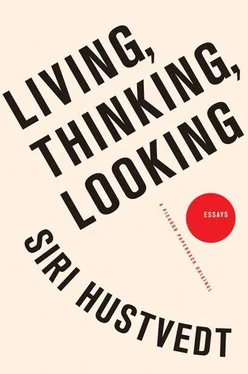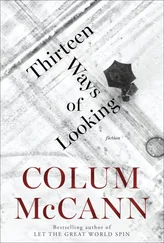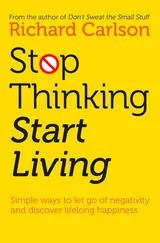If you keep rats awake, they die within two to four weeks. Of course, in order to prevent the poor creatures from sleeping, the scientists make it impossible for them to drop off, and whether they actually die of sleep deprivation or stress isn’t clear. Fruit flies and cockroaches perish without sleep. The putative record for a human being intentionally staying awake belongs to Randy Gardner, a seventeen-year-old, who remained awake for eleven days in 1965 for a science fair. He survived just fine but was a cognitive wreck by the end of his ordeal. As a volunteer writing teacher at the Payne Whitney psychiatric clinic in New York, I had many bipolar patients in my classes who had been admitted to the hospital during bouts of mania. A number of them told me that they had stayed awake for days, flying high as they had sex, shopped, danced, and even wrote. One woman reported she had written thousands of pages during her most recent manic phase. A strange illness called Morvan’s syndrome can cause people to remain essentially sleepless for long periods of time. In 1974, Michel Jouvet, a French researcher, studied a young man with the disorder who remained awake for several months. He was entirely cogent and suffered no memory impairment or anxiety. He did, however, have visual, auditory, tactile, and olfactory hallucinations every night for a couple of hours. He dreamed awake. Depending on their location, brain lesions can make people sleepy or prevent them from sleeping. They can also cause exceedingly vivid dreams or the cessation of dreaming altogether. Then again, people with no brain injury can experience all of these symptoms as well.
These admittedly random examples of sleeping and sleeplessness are all suggestive, and each one could feasibly become part of a larger argument about why we sleep and dream. Various understandings of both sleeping and waking consciousness depend on how the lines are drawn between and among the various states. Ernest Hartmann of Tufts University School of Medicine proposes a model he calls a “focused-waking-to-dreaming-continuum” which moves from the highly self-conscious, logical, category-bound, sequential wakefulness to daydreaming and reverie with their more fragmented, less logical, and more metaphorical thoughts to dreaming that is highly visual and much less self-conscious. This makes a lot of sense to me. The insomniac remains on the focused waking or daydreaming less-focused side of the continuum, unable for any number of reasons to let go. Hartmann shares with other researchers the conviction that dreaming is more emotional than waking life and that we make connections in dreams, often metaphorical ones, that are more creative than when we’re wide awake and working at some task. He does not believe dreams are random nonsense. Dreaming is another form of mental activity.
There is no place for dreamless sleep on Hartmann’s continuum, but that blankness might reside around the dreaming state. Gottfried Leibniz answered Descartes and Locke by arguing that not all thoughts are conscious. Some perceptions are too unfocused and confused to enter our self-reflective awareness. He argued for a continuum of perception from unconsciousness to full self-consciousness; therefore even deep, dreamless sleep is part of what and who we are. Leibniz died in 1716, but his insight remains startling. We still may not know why we sleep or wake up, but we know that both states are part of a dynamic, changing organism. Long after Descartes, Locke, and Leibniz, the French philosopher Maurice Merleau-Ponty wrote in The Phenomenology of Perception (1945): “The body’s role is to ensure metamorphosis.” 8Surely, that is exactly what we do when we move through the various stages of being wide awake and concentrated to the piecemeal musings of reverie, to sinking drowsiness, to sleep and dreaming, or to sleep with no dreams at all.
3. GOING UNDER
I remember a lamp that stood on the floor in the opened doorway to the bedroom where my sister and I slept. My mother put it there every night so the darkness would never be total. This is an old memory and around it are the usual fogs that dim recollection, but the light offered the hope that blackness would not snuff out the visible world entirely during my anxious transition to sleep. Bedtime rituals for children ease the way to the elsewhere of slumber — teeth brushing and pajamas, the voice of a parent reading, the feel and smell of the old blanket or toy, the nightlight glowing in a corner. For the child, bedtime means double separation, not only from wakefulness but also from Mother and Father. I wonder how many glasses of water have been fetched, how many extra stories have been read and lullabies sung, how many small backs and arms and heads have been rubbed in the past week alone in New York City.
In the “Metapsychological Supplement to the Theory of Dreams,” Sigmund Freud wrote,
We are not in the habit of devoting much thought to the fact that every night human beings lay aside the wrappings in which they have enveloped their skin as well as anything which they may use as a supplement to their bodily organs … for instance their spectacles, their false hair and teeth and so on. We may add that they carry on an entirely analogous undressing of their minds and lay aside most of their psychical acquisitions. Thus on both counts they approach remarkably close to the situation in which they began life. 9
Children are even closer to that beginning than we adults are. Night looms larger because time moves more slowly — a child’s day represents a much larger percentage of life lived than it does for the middle-aged parent. The mental capacities of little children do not include the rationalizations grown-ups use to explain to themselves that a fear is unjustified. The three-year-old does not yet live in a world of Newtonian physics. Not long ago, I saw a film of a psychology experiment in which young children worked hard to get their oversized bodies into toy cars.
Sleep resistance, bouts of insomnia, nightmares and night terrors, crawling into bed with parents in the middle of the night are so common among children it seems fair to call them “normal.” Infants, of course, are notorious for refusing to sleep and wake on command. The exasperated parent can now call a counselor who, for a fee, will come to your house and address your baby’s “sleep issues.” As far as I can tell, these interventions are directed more at exhausted parents than at the welfare of children. They consist of behaviorist techniques that “teach” the offspring to give up hope for comfort at times inconvenient for her progenitors. The message here is an early-life version of self-help. The truth is that a baby develops through the reflective exchanges he has with his mother (or what is now called the “primary caregiver”). Essential brain development that regulates emotion takes place after birth, and it happens through the back and forth of maternal-infant relations — looking, touching, comforting. But there is also an intrinsic alarm system in the brain that the neuroscientist Jaak Panksepp calls the PANIC system. All mammals exhibit “distress vocalizations” when they are separated from their caretakers. They cry when they’re left alone. As Panksepp writes, “When these circuits are aroused [PANIC system] animals seek reunion with individuals who help create the feeling of a ‘secure neurochemical base’ in the brain.” 10Harry Harlow’s famous experiments with rhesus monkeys demonstrated that isolated baby monkeys preferred inanimate “terry cloth mothers” to hard wire ones that provided them with food. The animals raised in isolation became anxious, timid, maladjusted adults.
I am not saying that “sleep training” creates psychiatric problems. No doubt many sleep-trained children grow up just fine, but I am saying that sleep training is counterintuitive . When your baby cries, you want to go to her, pick her up, and rock her back to sleep. If anything has become clear to me, it is how quickly advice about raising children changes. In the early twentieth century when the dictates of behaviorism reigned supreme, experts on child care advocated strict feeding and sleeping regimens and discouraged parents from playing with their children.
Читать дальше












